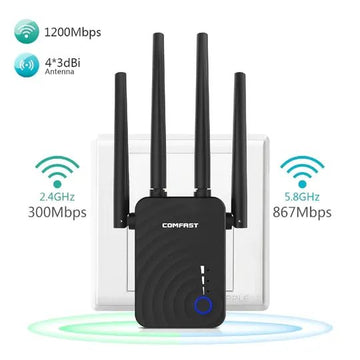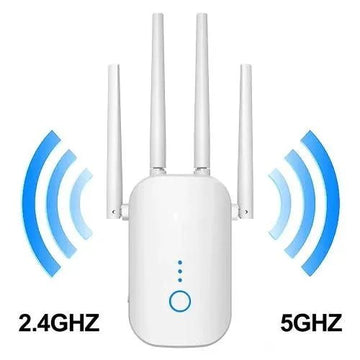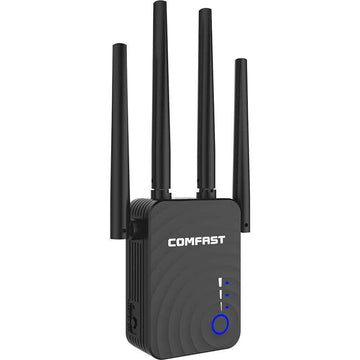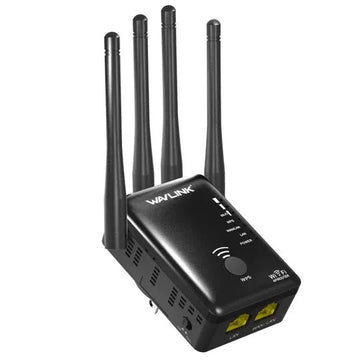Boost Your Signal: Discover the Best Location for Your WiFi Booster
In today's digital age, a strong and reliable WiFi connection is essential for staying connected and getting things done. However, even with the most advanced routers, there are instances where certain areas of your home or office may suffer from weak WiFi signals. This is where WiFi boosters come into play. WiFi boosters, also known as range extenders or repeaters, are devices designed to amplify and extend the range of your existing WiFi network. But where should you place these boosters for optimal performance? In this article, we will explore the best practices and factors to consider when placing your WiFi booster to ensure maximum signal strength and coverage.
Understanding WiFi Boosters
Before we delve into the specifics of placement, it's important to understand how WiFi boosters work. WiFi boosters operate by receiving the existing WiFi signal from your router and rebroadcasting it to extend the coverage to areas with weak signal strength. They essentially act as intermediaries between your devices and the router, bridging the gap to ensure a more stable and stronger connection. These devices can significantly improve your WiFi experience by eliminating dead zones and enhancing signal penetration through walls and floors.
Factors to Consider for Placement
When determining the ideal location for your WiFi booster, it is essential to consider several factors. Firstly, assess the current WiFi signal strength in different areas of your home or office. By doing so, you can pinpoint the areas where the signal strength is weakest, indicating where a booster would be most beneficial. Additionally, identify any areas with limited or no WiFi coverage, commonly referred to as dead zones. These areas should be prioritised for signal improvement. Next, take note of potential obstacles that may interfere with the WiFi signal, such as walls, furniture, appliances, or other electronic devices. Understanding and addressing these obstructions is crucial as they can hinder the signal and impact the effectiveness of your booster. Lastly, familiarise yourself with the range and coverage capabilities of your WiFi booster. This knowledge will help you determine the most strategic placement by considering how far the boosted signal can reach and ensuring optimal coverage throughout your space. By taking these factors into account, you can make an informed decision on where to position your WiFi booster for maximum signal strength and coverage.
Best Practices for WiFi Booster Placement
Now that you have considered the relevant factors, let's explore some best practices for placing your WiFi booster. First, ensure that the WiFi booster is placed in proximity to the wireless router. It should be within a reasonable distance where it can still receive a strong WiFi signal to amplify and extend. This proximity allows for optimal performance. Additionally, it is important to keep the WiFi booster away from other electronic devices that may cause interference. Devices like microwave ovens, cordless phones, baby monitors, or Bluetooth devices can disrupt the WiFi signal, reducing the effectiveness of the booster. Next, consider central placement of the WiFi booster. Position it at a central location relative to the areas with weak signal coverage. This strategic placement helps distribute the amplified signal evenly, reducing the chances of dead zones and ensuring a consistent connection throughout your space. Whenever possible, try to place the WiFi booster at an elevated position. Higher placement can enhance signal propagation and help overcome obstructions such as furniture or walls, resulting in improved signal strength and coverage. Finally, don't forget to adjust the antennas on your WiFi booster. Experiment with different angles and orientations to optimise signal reception. By following these best practices, you can ensure that your WiFi booster is positioned effectively for maximum signal strength and coverage in your environment.
Testing and Adjusting the Placement
Once you have successfully placed your WiFi booster following the best practices, it is crucial to conduct thorough testing and monitoring while remaining open to making adjustments if necessary. First, perform signal strength tests using a WiFi analyzer or a signal strength testing app. This allows you to measure the signal strength in different areas of your space and compare the results before and after installing the booster. By doing so, you can accurately assess the effectiveness of the booster and identify any areas that may still have weak signal coverage. Additionally, it is important to monitor the performance of your WiFi booster over time. Keep a close eye on the signal strength, stability, and overall connectivity to ensure that the booster is functioning optimally. If you discover certain areas with persistent weak signal coverage, consider repositioning the WiFi booster or adjusting the antenna orientation. Fine-tuning the placement based on the test results can help optimise the signal strength in those problematic areas. By conducting thorough testing, monitoring performance, and making necessary adjustments, you can ensure that your WiFi booster is delivering the desired results and providing optimal signal strength and coverage throughout your space.
Additional Tips for Boosting WiFi Signal
In addition to placing a WiFi booster, there are several additional tips you can implement to further enhance your WiFi signal. First, it is crucial to regularly update your router's firmware. By keeping your router's firmware up to date, you ensure compatibility with the latest standards and technologies, which can significantly improve signal stability and performance. Secondly, in larger spaces or areas with particularly weak signals, consider utilising multiple WiFi boosters or WiFi extenders. This allows you to create a network of boosters that work together to extend the coverage and amplify the signal throughout your space. Finally, optimising your router's settings can make a notable difference. Take the time to explore your router's settings and adjust them for optimal signal transmission. This may involve changing the channel to avoid interference, enabling QoS (Quality of Service) settings to prioritise certain types of network traffic, or adjusting the transmit power to enhance signal strength. By implementing these additional tips, you can further boost your WiFi signal and enjoy a seamless and reliable connection.
Conclusion
Having a WiFi booster is a game-changer when it comes to extending your WiFi signal and eliminating dead zones. By considering the factors mentioned and following the best practices for placement, you can ensure that your WiFi booster operates at its maximum potential. Remember to test the signal strength, monitor performance, and make adjustments as needed. With these guidelines and additional tips, you can boost your signal and enjoy a reliable and robust WiFi connection throughout your home or office.





